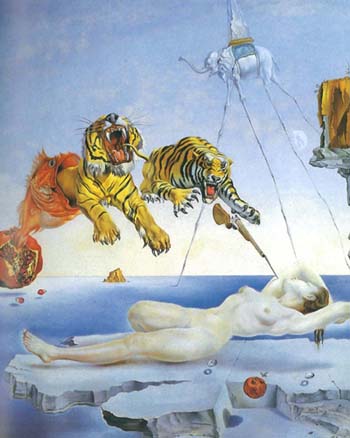Gods in Exile
dal 3/3/2006 al 6/5/2006
Segnalato da
Albert Oehlen
Christian Ludwig Attersee
Arnold Boecklin
Salvador Dali'
Philippe Halsman
Karel Teige
Peter Pakesch
Katrin Bucher
Katia Schurl
3/3/2006
Gods in Exile
Kunsthaus Graz am Landesmuseum Joanneum, Graz
In the history of the romantic view of the artist, the artist as a myth or as a pop star goes back very far. Like many others, Albert Oehlen has reflected intensely on this role, which - in an interplay with works by Christian Ludwig Attersee, Arnold Boecklin, Salvador Dali', Philippe Halsman and Karel Teige - leads to this exhibition about the metamorphosis and mythology of the artist. The artists presented in the exhibition are all characterised by their hybrid way of dealing with the image world.

Salvador Dali', Albert Oehlen et al.
Curators Peter Pakesch, Katrin Bucher
Assistant curator Katia Schurl
In the history of the romantic view of the artist, the artist as a myth or as a pop star goes back very far. Like many others, Albert Oehlen has reflected intensely on this role, which - in an interplay with works by Christian Ludwig Attersee, Arnold Bocklin, Salvador Dali', Philippe Halsman and Karel Teige - leads to this exhibition about the metamorphosis and mythology of the artist.
The artists presented in the exhibition are all characterised by their hybrid way of dealing with the image world. As to arrangement and design - appropriate for this thematic exhibition - the principle of collage is applied. Forty works by Albert Oehlen that were created between 1983 and 2006 encounter two key works of Christian Ludwig Attersee (1968 and 1972); a thematic line is drawn between Salvador Dali' (represented with five paintings between 1932 and 1981) and Arnold Bocklin (also represented with five works created between 1875 and 1889); and, together with Philippe Halsman’s photo montages of Dali' as well as the collages of the Czech theorist and designer Karel Teige, an iconographic environment will be illuminated that elevates the style mix into a virtually mythological principle. The artist not only as a pop star but also as both the destroyer and the creator of myths.
Albert Oehlen’s work eludes categorization with extreme consistency. In the early 1980s, his paintings became known erroneously in the context of the “Neue Wilden". Current he is regarded, in a much more complex way, as an artist who deals with painting and its significance like hardly anybody else does.
Salvador Dali'’s willfulness expressed in his work and way of life, running contrary to all popular images and creating a synthetic ideal of the artist, reveals an artist who takes up very early in his work the contradictions of the end of modernism.
In turn, late Romanticism produced a wide range of artist figures of a kind not previously encountered. The mythologically loaded works by Arnold Bocklin that were of prime importance for Dali' and many a Surrealist have their place in this field of references.
However, the work of Karel Teige, who ranks among the most influential figures of Czech modernism, is only little known. As the architecture theorist of the radical Czech constructivism, which he also accompanied as a typographer, he was famous. Today his collages have an extremely visionary appearance.
Christian Ludwig Attersee and the ironic self-dramatizations in his early work have always been a particularly important point of reference for Oehlen. In these works the artist is - similarly to the Surrealist Dali' - his own muse, and his body is at once an ancient Greek god and the site of the ideal form. As to that, the author Wolfgang Bauer finds the divinely excessive and ironic comment. Mix and confrontation, elevation of the image and at the same time capricious iconoclasm with mythmaking in tow - this is basically what identifies the subject matter of the gods in exile.
Image: Salvador Dali'
Kunsthaus Graz am
Landesmuseum Joanneum Lendkai 1, A-8020 Graz
Opening hours:
Tue - Sun 10am - 6pm, Thu 10am - 8pm



